This is a continuation of a series of posts on the Nikon D850. You should be able to find all the posts about that camera in the Category List on the right sidebar, below the Articles widget. There’s a drop-down menu there that you can use to get to all the posts in this series; just look for “D850”.
I took the Nikon 200 mm f/2 VR I lens I used in this post and made an aperture series using the contrast-detection autofocus (CDAF):
I’ve plotted the three Adobe RGB color channels. The graph presents displacement of the image projected on the sensor from the desired green-channel focal plane. Negative numbers indicate front-focusing. The image-plane shift is in micrometers (um). The separation of the focal distances of the three color planes is because of the longitudinal chromatic aberration (LoCA) of the lens. The dots indicate the results for each of the ten exposures at each f-stop. I’ve plotted lines indicating the average (aka mean or mu) of the sample set bolder and added thin lines above and below the means that are one standard deviation (sigma) away from them.
Let’s look at the diameters of the circles of confusion (CoCs) implied by the above small amount of focus error:
This is excellent. The errors are within one pixel pitch except for f/2.8, f/3.2, and f/3.5, where they’re about half again that big.
Let’s compare that to PDAF with perfect wide open AF adjustment:
If we plot the green channels on one graph (CDAF dotted), here’s what it looks like:
When the planets align, PDAF can be very good indeed.
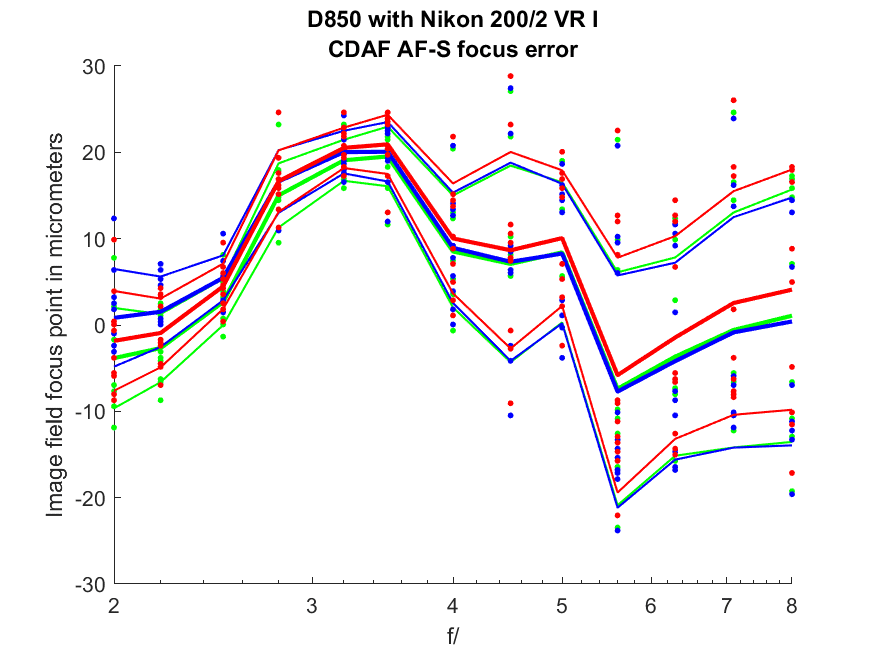
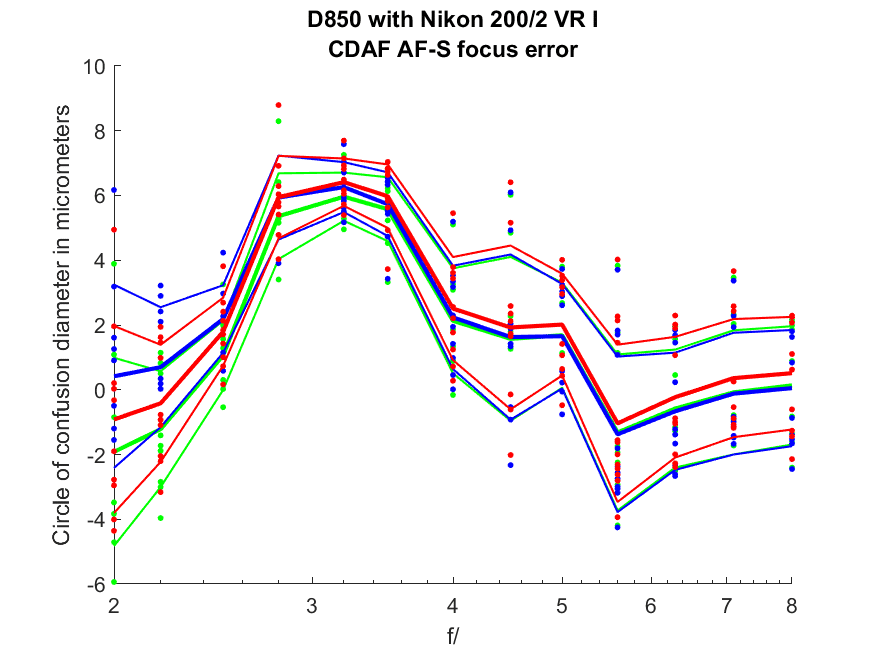
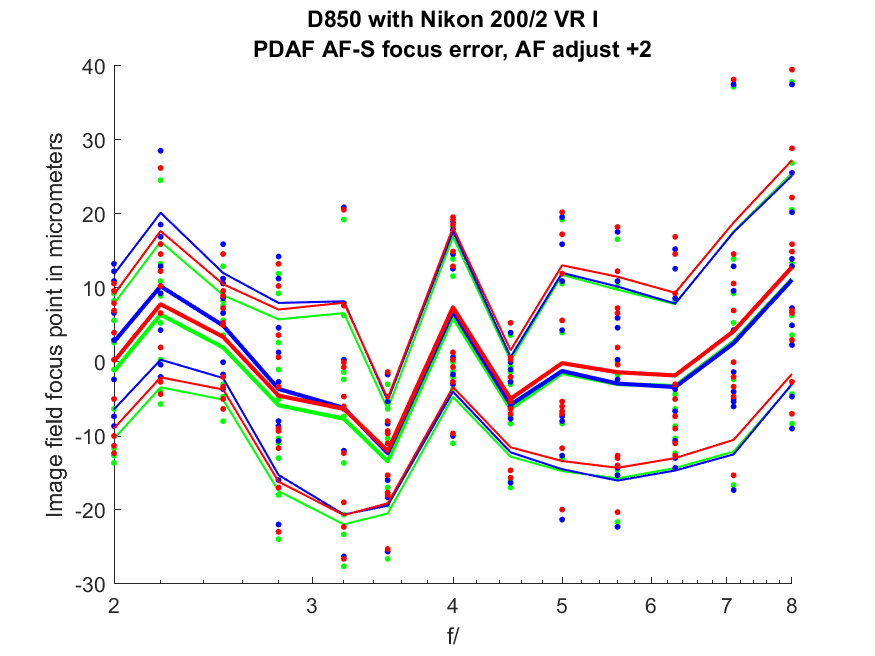
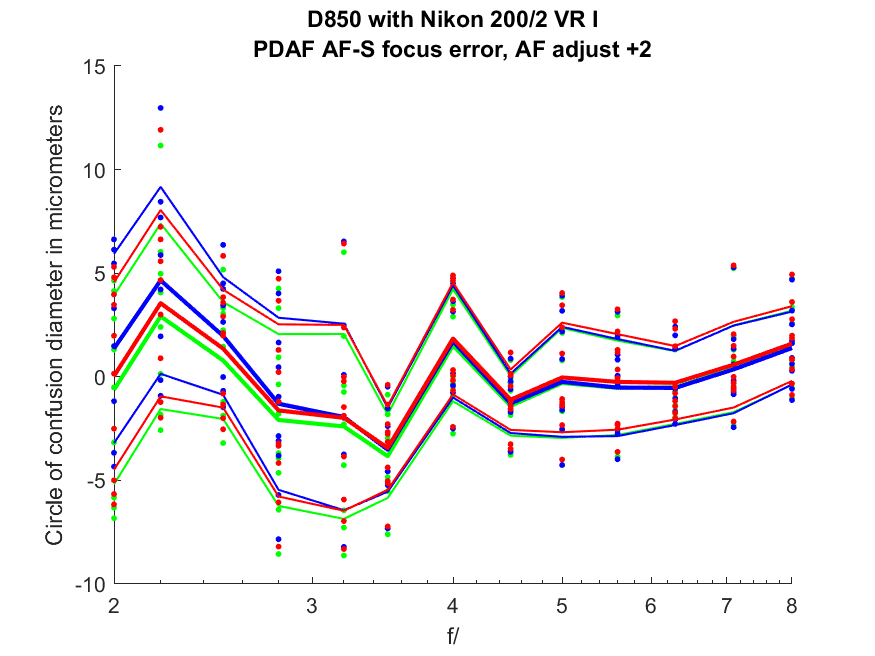
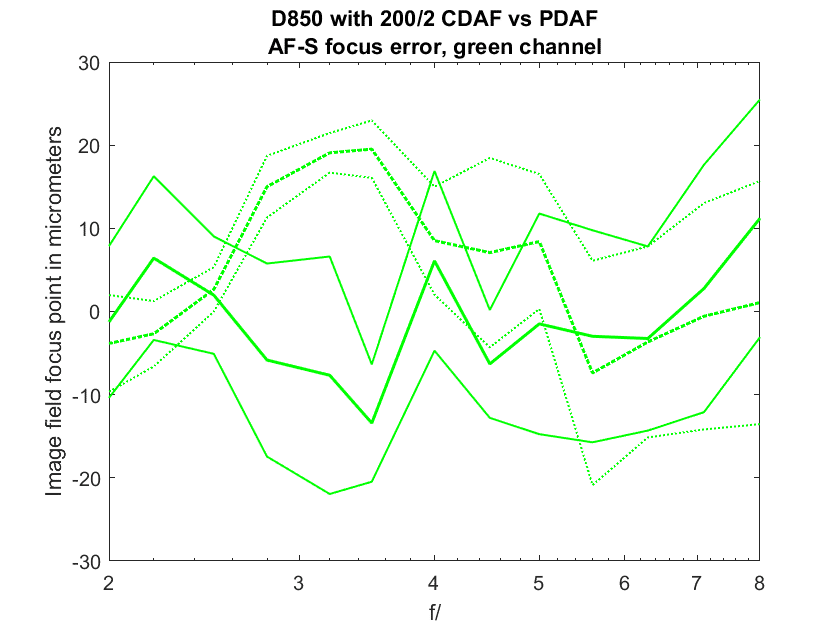
Leave a Reply